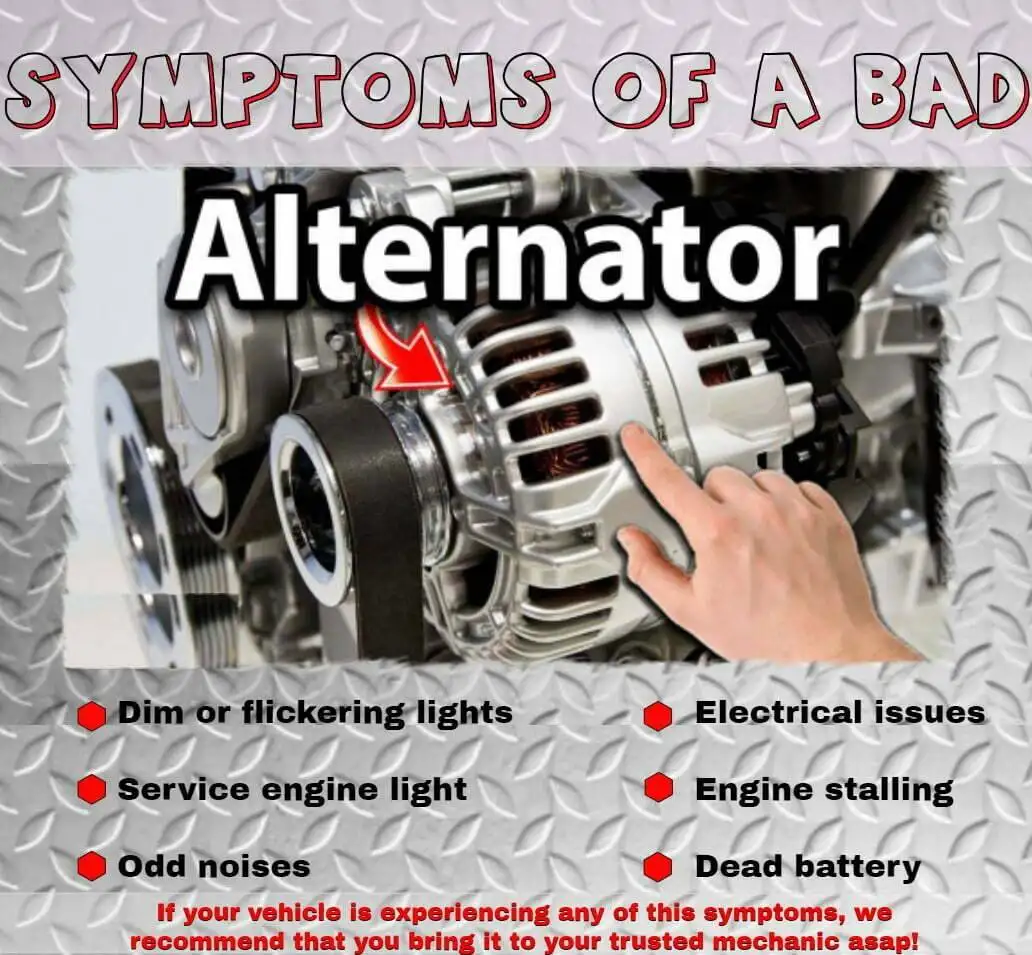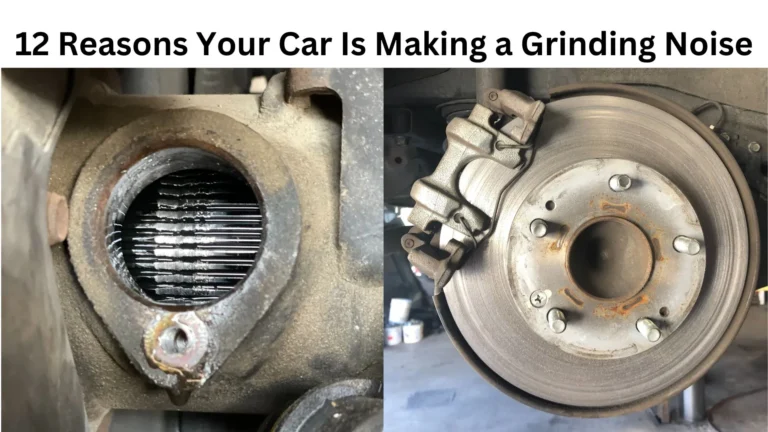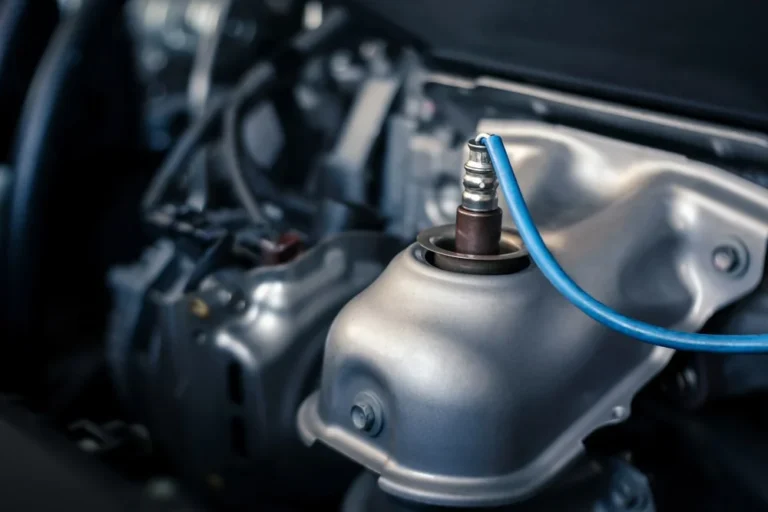When an alternator fails completely, you’ll know it. In most cases, the charging light will illuminate on the dash, and you may experience one or more of the following symptoms:
- Engine stalls while driving due to loss of electrical power
- Dimming of the dashboard and head lights
- Problems starting the vehicle
- Repeated need to jump start the vehicle due to dead battery
- Abnormal noise
There are few different ways the alternator can fail:
- Undercharging: When the alternator is undercharging, the lights may dim or flicker and the battery will become discharged. A discharged battery may result in a vehicle that is hard to start, or doesn’t start at all. If you’re driving the vehicle when the alternator goes out, the vehicle will eventually stall. On modern vehicles, an undercharging charging alternator may result in an illuminated check engine light. It may also cause all kinds of problems with the onboard electronics and computer controls.
- Overcharging: An alternator that is overcharging may result in short bulb life. On modern vehicles, an overcharging alternator may result in an illuminated check engine light. It may also cause all kinds of problems with the onboard electronics and computer controls.
- Bearing noises: In some cases, an alternator may still function properly, but make a lot of noise. Usually, the noise will be a high-pitched whirring that coincides with engine RPM. This typically indicates the bearings inside the alternator are failing.
How does an alternator work?
The alternator is the main part of the charging system. Not only does it charge the battery, but it also supplies power to the entire vehicle when the engine is running. Without the alternator, your vehicle will die quickly.
To develop current, the alternator relies on something called electromagnetic induction. This phenomenon occurs when a conductor is moved through a magnetic field, resulting in the production of electricity. Inside the alternator there’s a stationary set of windings, called a stator, and a rotating electromagnet, called a rotor. The field windings of the rotor receive power through brushes that ride against slip rings.
A belt is used to drive the alternator off the engine crankshaft. The alternator drive pulley is directly connected to the rotor. As the engine turns, the rotor turns and electricity is generated in the stator windings.
The alternator produces alternating current (AC) and the rest of the vehicle uses direct current (DC). As a result, the AC current must be converted to DC using a diode rectified bridge. Diodes are basically one-way check valves, which prevent AC current from flowing both ways. This process, known as rectification, converts AC current to DC.
On older vehicles, a voltage regulator is used to control alternator output. The engine control module (ECM) controls alternator output on late model vehicles.
How to troubleshoot an alternator problem
Checking the alternator is a relatively easy process. Alternator charging voltage can be checked using a digital multimeter at the battery terminals. With a fully charged battery, alternator charging voltage should be approximately 13.8 to 14.2 volts at idle (lights off). Alternator amperage output can also be checked. This is done by placing a load on the system while checking amperage using an inductive probe around the battery wire.
Perhaps, the easiest way to check the alternator is with a dedicated charging/starting system tester. Most repair facilities and some auto parts stores have access to these tools. You simply push a few buttons on the tool and follow the prompts to determine if the alternator is good or bad.
Before condemning the alternator, it’s a good idea to check the drive belt. A slipping or loose drive belt can result in an alternator that doesn’t charge properly. It’s also a good idea to charge and check the battery, as an internally shorted battery can lead to alternator overcharging.
In the past, alternators were repaired and rebuilt. But nowadays, they’re relatively inexpensive and are usually just replaced. So, if your alternator is bad, popping in a new one is the usual fix.




